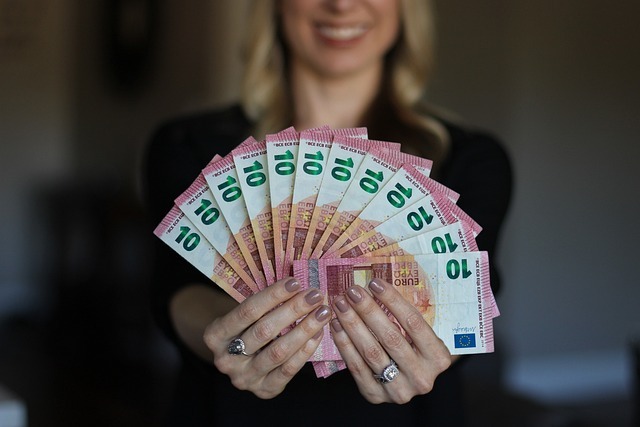A trading performance measure known as the “profit factor” is the ratio of gross earnings to gross losses. A lucrative system has a profit factor of more than 1.0; one of 2.0 or more is deemed excellent, and one of more than 3.0 is exceptional. The Profit Factor should be used with other indicators to provide a complete picture.
What does the Profit Factor mean?
These days, market analysis programs let traders swiftly examine trading methods. Also, you may make strategy performance reports and use them to evaluate your actual trading outcomes. Backtesting analyzes a system’s performance over a predetermined period by applying trading rules to past data.
Relevant performance indicators are more than just data; they also serve a variety of essential purposes, including:
- Control and direct the creation of a trading strategy.
- Compare trading results to the desired benchmarks.
- Identify possible issues.
Since the approach needs to consider the volatility of returns or maximum drawdown, we cannot conclude that it is appropriate based only on the return. As processes must be quantified to be evaluated for performance, the profit factor is the most popular approach.

The profit factor is the gross profit ratio to the gross loss (including fees) throughout the trading period. This performance indicator enables us to comprehend the benefit obtained per unit of risk. A lucrative, non-risk-adjusted system is one with a profit factor larger than one.
(GrossWinningTrades/GrossLosingTrades) = ProfitFactor
Hedge Funds employ Profit Factor, an effective risk management measure, to assess traders. The key benefit of the profit factor is that, in addition to being straightforward to calculate, it shows us how much we make for every dollar we lose. Suppose, for instance, that your profit factor is 1.5. You can make $1.50 on an investment of $1.
How is the profit factor calculated?
This week, we are developing a brand-new trading system with four entry indications. With slippage and transaction costs, there are two winners worth $500 and $300 and two losers worth $200 and $150.
The results of the profit factor formula are as follows:
($500+$300)/($250+$150)= 2.28
As a result, the winning transactions outnumber the losing ones by a factor of 2.28. It also shows we can make $2.28 for every $1 spent with this technique. The profit factor indicates that our tactic is lucrative. Four transactions are insufficient to evaluate a trading system’s effectiveness.
Use this as another illustration:
Let’s assume we made five deals this time, three of which were profitable, and the other two were unsuccessful. The winners are $250, $150, and $200; $300 and $500 are the losers. By using the algorithm, we get the following Profit factor:
($250+$150+$200) / ($300+$500)= 0.75.
As a result, we may claim that our wins are less frequent than our losses or that we only make $0.84 for every $1 invested. This trading approach requires development.
We may examine several situations using a few variations of the Profit Factor calculation. One such example is:
ProfitFactorAlternative = (WinRate * AverageWin) / (LossRate * AverageLoss)
- The average win is determined by dividing the total number of winning transactions by the total number of deals. It represents the estimated value of a typical successful deal.
- The average loss is determined by dividing the total number of losing transactions by the total number of winning deals. It represents the estimated loss on a typical deal.
Let’s use a scenario with five entrance signals in a week to grasp this better. One person wins 5000, and four lose (1500+ $1000+ 500+ 200). The profit component is thus:
$5000/ ($1500+$1000+$500+$200) = 1.56
The system is lucrative, as shown by the outcome. However, the measure must demonstrate a high Drawdown and low Win rates. Several losses in succession will be difficult to withstand, and one particular transaction does not guarantee that the overall trading strategy will be successful.

A Good Profit Factor: What Is It?
We may make more money than we lose if the ratio is bigger than one. In such cases:
- A factor greater than 1 indicates a successful system.
- A losing system has a factor that is less than 1.
Therefore, trading is not recommended for trading methods with a profit factor of little over 1. Since even a little shift in the market might make a trading strategy useless, you should trade these trading techniques first. This is because a low-Profit factor indicates a narrow margin, which is not ideal for trading. Moreover, we’re talking about unadjusted returns, which means that if we’re barely profitable, we should invest in a secure, guaranteed return vehicle like at-bills rather than taking on risk.
We would always want to use a trading strategy with a large safety margin. Any value between 1.25 and 1.75 indicates a tiny safety margin.
Also, you will be responsible for paying certain out-of-pocket expenditures such as taxes, market data costs, broker commissions, bank commissions, and fees for trading platforms. These costs are necessary for the trading industry and must be covered out of your trading income.
Gain-to-Pain Ratio (GtPR)
A close relative of the profit factor is the gain-to-pain ratio (GtPR). The Gain-to-Pain Ratio (GtPR) and profit factor calculations are identical, except that the GtPR divides the absolute amount of the net trading loss for the period by the net profit of all the weekly or monthly deals.
To put it simply, the Gain-to-Pain ratio shows how much suffering is necessary to get a certain degree of benefit. The GtPR will always be positive, much like the Profit Factor.
Whereas a one-year data set is an effective performance measure, GtPR should preferably be maintained over three and five years. A GtPR of at least 1.0 and at least 2.0 is considered great.
What are the drawbacks of the profit factor?
The Profit Factor does not disclose the allocation of the transactions in the trading system. A profit factor over one only sometimes indicates a persistent trader. Even if all other transactions have ended in losses, one successful trade might have a favorable effect.
As a consequence, even while the profit component aids in evaluating the effectiveness of the trading system, it is crucial to evaluate the whole picture and compare the outcome with a few other essential factors. Among these ideas are the following:
- The number of transactions processed by the trading system.
- If the maximum drawdown exceeds the trader’s risk limit.
- The amount of dispersion in a trading system’s outcome.
- The number of successful trades.
- The average per-trade profit.
The trader must identify the important ratios to analyze a trading strategy objectively. There are better courses of action than considering the profit aspect alone. The numerous measures enable us to view the broader picture and provide a more accurate analysis since they complement one another.

The Summary
A mathematical ratio, the profit factor, is created by dividing total earnings by gross losses. The most suitable values are between 1.75 and 4. However, we are dubious about values that fall and are outside of this range. A low-profit factor indicates a worse trading strategy, while a ratio of greater than 4.0 may appear unrealistic in real life.
Automated or algorithmic trading is one approach to addressing these scatterings and volatility in the actual world. This enables you to choose a variety of tactics that may smooth out your returns.
If you had a portfolio of quantifiable strategies, you could do this. Due to its variety, using many procedures might result in a larger profit factor.
You need to engage in several markets throughout a variety of time periods if you want to strive for a larger Profit factor. Combining tactics with automatic trading will only increase its likelihood.

